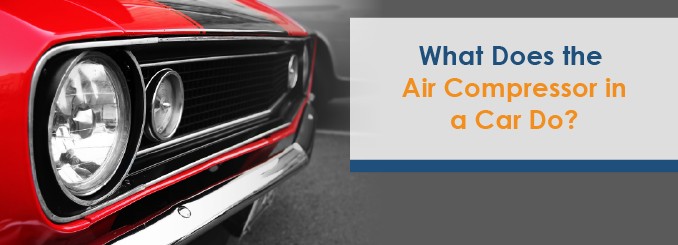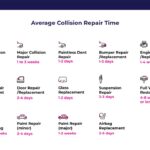Air compressors have revolutionized numerous aspects of automotive work, from initial vehicle assembly to everyday car maintenance and repair. Since the dawn of mass car production, compressed air technology has streamlined manufacturing processes, making vehicles more accessible. Beyond the factory floor, air compressors play a vital role in vehicle functionality, most notably in the air conditioning systems that provide crucial comfort for drivers and passengers, especially during hot weather. But the utility of air compressors extends far beyond just keeping you cool.
So, how is an air compressor used in car repair? It’s a multifaceted tool with applications ranging from powering essential in-car systems like air conditioning to operating a wide array of pneumatic tools in repair shops. This article will delve into the various ways air compressors are indispensable in car repair, ensuring vehicles are not only comfortable but also properly maintained and efficiently repaired.
The Air Compressor’s Role in Your Car’s Air Conditioning System
When summer arrives and temperatures rise, the air conditioning (A/C) system in your car becomes a sanctuary. The refreshing blast of cool air from the vents offers a welcome escape from the sweltering heat. This icy relief, however, isn’t magic. It’s a result of a sophisticated thermodynamic process driven by your car’s air compressor.
Despite the term “icy,” there’s no ice involved in cooling your car. Instead, the A/C system uses the principle of removing heat from the air. This process begins the moment you engage your car’s A/C by pressing the A/C button. This action activates the air compressor, the heart of the system.
The air compressor works by compressing the refrigerant, a special fluid, significantly increasing its temperature and pressure. This high-pressure, hot refrigerant then travels to the condenser, where it dissipates heat to the outside air. Think of the condenser as a radiator for the refrigerant. After releasing heat, the refrigerant passes through a dryer or accumulator, which removes any moisture and contaminants, ensuring the system’s longevity and efficiency.
Next, the purified refrigerant flows through an expansion valve or orifice tube. This component drastically reduces the pressure of the refrigerant, causing it to cool down rapidly. Finally, this cold, low-pressure refrigerant enters the evaporator, located inside your car’s dashboard. As warm cabin air is blown across the evaporator, the refrigerant absorbs the heat, cooling the air. This newly cooled air is then circulated into the passenger compartment through the vents, providing that refreshing A/C breeze you feel.
 air compressor in a car
air compressor in a car
Air Compressors Beyond Air Conditioning: Powering Car Repair Tools
While the air compressor is fundamental to your car’s A/C, its applications in car repair extend far beyond climate control. In auto repair shops and garages, air compressors are the workhorses that power a vast array of pneumatic tools, significantly enhancing efficiency and effectiveness in various repair tasks.
Pneumatic Tools: The Mechanic’s Best Friend
Pneumatic tools, or air tools, are powered by compressed air, offering numerous advantages over traditional hand tools or electric tools in car repair settings. They are generally more powerful, lighter, and often more durable, making them ideal for the demanding tasks of automotive repair. Here are some common pneumatic tools used in car repair, all reliant on an air compressor:
- Impact Wrenches: These are essential for quickly and efficiently removing and tightening nuts and bolts, particularly useful when dealing with wheels, suspension components, and engine parts. Air impact wrenches deliver high torque, making short work of even the most stubborn fasteners.
- Air Ratchets: Similar to impact wrenches but designed for tighter spaces, air ratchets provide powered ratcheting action, speeding up tasks like engine assembly and disassembly where access is limited.
- Air Hammers: Used for tasks requiring hammering or chiseling force, such as separating ball joints, removing rusted parts, or shaping metal. Air hammers deliver rapid, powerful blows, saving time and effort.
- Air Drills and Sanders: Pneumatic drills are powerful and reliable for drilling holes in metal or plastic car components. Air sanders, available in various types like orbital and dual-action, are used for bodywork, paint preparation, and removing rust, providing smooth and consistent finishes.
- Spray Guns: Air compressors are crucial for powering paint spray guns, allowing for even and professional application of paint, primer, and clear coats in automotive refinishing. They ensure consistent pressure for a flawless finish.
- Tire Inflators: While seemingly simple, air-powered tire inflators are essential for quickly and accurately inflating tires to the correct pressure, a fundamental aspect of car maintenance and repair.
Other Applications of Air Compressors in Car Repair
Beyond powering specific tools, air compressors are also utilized in other important aspects of car repair:
- Fluid Evacuation and Filling: Air pressure can be used to evacuate fluids like old engine oil, transmission fluid, or coolant from a vehicle system for replacement. Similarly, air-powered pumps can efficiently refill these fluids.
- Parts Cleaning: Compressed air is invaluable for cleaning parts. Air blow guns can quickly remove dust, debris, and metal shavings from components after disassembly or machining, ensuring cleanliness before reassembly.
- Lifting Equipment: Larger air compressors can power pneumatic lifts and jacks, safely raising vehicles for undercarriage inspections and repairs.
Maintaining Your Air Compressor for Reliable Car Repair
Just like any other tool, an air compressor requires regular maintenance to ensure it operates reliably and efficiently, whether it’s the one in your car’s A/C system or the one powering your garage tools.
Car A/C Compressor Maintenance
While car A/C compressors are designed to last, certain factors can affect their lifespan. Vehicle age and mileage are primary factors, as wear and tear over time can impact internal components. To prolong the life of your car’s A/C compressor:
- Regular Use: Even during colder months, run your A/C for at least 10 minutes every month. This circulates the refrigerant and lubricates the compressor components, preventing stagnation and potential damage.
- Refrigerant Checks: If your A/C performance diminishes, it might be due to low refrigerant levels. Have the system checked for leaks and recharged as needed by a qualified technician.
- Professional Inspections: Include A/C system checks as part of your regular car maintenance schedule. A technician can identify potential issues early on, preventing costly repairs down the line.
Garage Air Compressor Maintenance
For air compressors used to power tools in car repair, regular maintenance is crucial for safety and longevity:
- Drain Moisture: Condensation builds up in the compressor tank. Drain the tank regularly (daily or after each use) to prevent rust and corrosion, which can damage the tank and compromise air quality.
- Check Air Filter: The air intake filter prevents dust and debris from entering the compressor. Clean or replace the filter regularly to ensure clean air intake and efficient operation.
- Lubrication: Many air compressors require regular oil changes. Follow the manufacturer’s recommendations for oil type and change intervals to keep the compressor running smoothly.
- Inspect Hoses and Fittings: Check air hoses and fittings for leaks or damage regularly. Replace worn or damaged components to maintain air pressure and prevent accidents.
- Professional Servicing: Schedule periodic professional servicing to ensure all components are in good working order and to address any potential issues before they become major problems.
Choosing the Right Air Compressor for Car Repair
Selecting the right air compressor for car repair depends on your needs, whether you are a DIY enthusiast or a professional mechanic. Factors to consider include:
- CFM (Cubic Feet per Minute): This rating indicates the volume of air the compressor can deliver. Tools have specific CFM requirements. Ensure your compressor provides sufficient CFM for the tools you intend to use simultaneously.
- Tank Size: Larger tanks provide a reserve of compressed air, allowing for longer tool use without the compressor cycling on and off as frequently. For professional shops or heavy tool use, larger tanks are preferable.
- Horsepower (HP): Higher horsepower generally translates to faster tank fill times and the ability to power more demanding tools.
- Type of Compressor: Common types include:
- Single-Stage Compressors: Suitable for lighter-duty tasks and smaller garages.
- Two-Stage Compressors: More powerful and efficient, ideal for professional shops and heavy tool use.
- Oil-Lubricated Compressors: Generally more durable and quieter but require oil maintenance.
- Oil-Free Compressors: Less maintenance and cleaner air output, suitable for tasks where oil contamination is a concern, but may be louder and have a shorter lifespan.
- Portability: Consider whether you need a portable compressor or a stationary unit, depending on your workspace and tool usage.
Conclusion: Air Compressors – Essential for Modern Car Repair
From the sophisticated climate control systems in our vehicles to the powerful pneumatic tools used in repair shops, air compressors are integral to modern car repair and maintenance. They enhance efficiency, power a wide range of tools, and contribute to both the comfort and functionality of our vehicles. Understanding how air compressors are used in car repair, and maintaining them properly, is essential for both car owners and automotive professionals alike. Whether you’re fixing a flat tire, overhauling an engine, or simply enjoying a cool drive on a hot day, the air compressor plays a crucial, often unseen, role in the world of automobiles.

